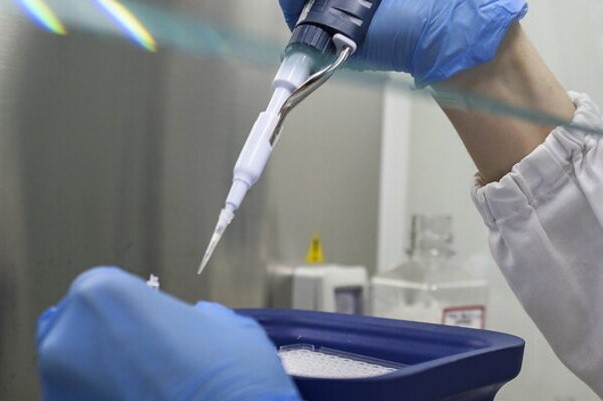
What is a tumour and how it forms
The term tumour, or cancer, does not refer to a single disease, but to a group of different diseases that can affect almost any cell in the body
Cells in the body grow and divide into new cells; when they get old or damaged, they die and are replaced by new cells.
In cancer, this process goes wrong: the damaged cells survive and end up dividing (and therefore multiplying) to such an extent that they create a build-up of cells that we call a tumour.
Tumours can be solid, when they are masses of tissue, but also liquid, as in the case of blood cancers.
Benign and malignant tumour
When we talk about tumours we normally refer to ‘malignant’ tumours (or cancer), but we often hear about ‘benign’ tumours.
Benign tumours are characterised by the growth of a few cells that outgrow each other, creating masses that can be quite large, but which remain confined, retain the characteristics of the tissue from which they originate, and do not tend to invade surrounding organs or metastasize (the mechanism by which cancerous cells spread to other parts of the body via blood or lymphatic vessels, colonising other organs and tissues). In general, once removed, benign tumours do not tend to recur as malignant tumours often do.
Malignant tumours (or cancer) can invade neighbouring tissues or spread to other organs.
As they grow, some cancer cells may detach from their original location and travel through the blood or lymphatic system to distant places in the body and produce metastases.
Genesis of a tumour: characteristics of cancer cells
Cancer cells have characteristics that differentiate them from normal cells and allow them to grow unchecked.
Cancer cells are also less specialised than normal cells. Thus, while normal cells transform into cell types with specific functions, cancer cells do not specialise, but grow as they do without stopping, partly because they are able to ignore both the signals that cause them to do so and the signals of apoptosis, the natural, genetically controlled process of programmed cell death, in which cells are eliminated from the body without causing tissue damage.
Without apoptosis, the body cannot eliminate unnecessary cells, which then form a mass.
Tumour cells are also able to influence the microenvironment, i.e. the cellular and extracellular environment around which the tumour develops and which includes surrounding blood vessels, immune system cells, connective cells and more.
They can also bypass the immune system, which is responsible for protecting the body from infection and other conditions through a set of specialised organs, tissues and cells. In fact, although the immune system generally eliminates damaged or abnormal cells in the body, some cancer cells are able to hide.
How does cancer arise?
Cancer is a genetic disease, caused by changes in the genes that control how cells function and how they reproduce.
The genetic changes that cause cancer are only rarely passed on from parents to children, so cancer is generally not a hereditary disease.
In fact, in the vast majority of cases these genetic changes appear during an individual’s lifetime due to errors in cell division or due to DNA damage linked to environmental risk factors, such as chemicals in smoke or radiation such as UV radiation.
How does cancer spread?
The process by which cancer cells spread to other parts of the body is called metastasis. A cancer that has developed in a different place from where it originated is called metastatic cancer.
Metastatic cancer retains the same name and is formed by the same type of cancer cells as the primary cancer; for example, breast cancer that spreads and forms a metastatic tumour in the lungs is a metastatic breast cancer, not a lung cancer.
Metastatic tumours can cause serious damage to the functioning of the body; most people who die of cancer die precisely because of metastases.
Not all tissue changes equate to tumour
Not every change that occurs in tissue is a tumour; however, some changes can, if left untreated, turn into cancer, and it is good to keep them monitored. Examples are:
Hyperplasia occurs when cells in a tissue divide faster than normal, causing a build-up of cells that results in an increase in the size of a particular organ or tissue. It can be caused by several factors and conditions, including chronic irritation.
Dysplasia is a more serious condition than hyperplasia and indicates a morphological, quantitative and qualitative change in a cellular structure of a given tissue, often epithelial.
In the case of dysplasia, the cells thus appear ‘abnormal’ in shape, colour or structure because they have taken on different characteristics from healthy cells.
Carcinoma in situ is a proliferation of abnormal epithelial cells, which have morphological and biological characteristics of malignancy, but which do not possess the capacity to invade tissues beyond the basement membrane: this means that they cannot reach blood vessels, lymphatic vessels and, therefore, cannot create metastases.
However, some carcinomas in situ can develop into cancer and are therefore usually treated.
Read Also:
UK, FBU Firefighters’ Union Organises Training To Combat Cancer Threat


